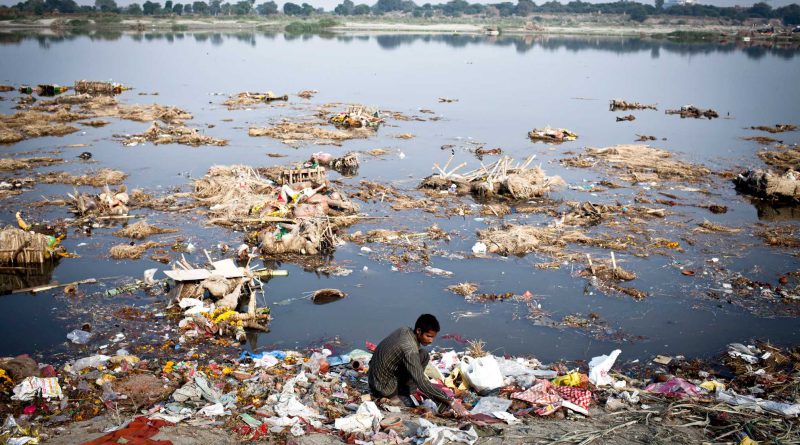A Serious threat to every life : Water Pollution, Humans are determined to kill every living being that has life..
Water Pollution: A Growing Global Crisis
Water pollution has become one of the most urgent issues worldwide. It occurs when harmful substances, such as chemicals or bacteria, contaminate water bodies like rivers, lakes, and oceans, making the water unsafe for humans and wildlife. Shockingly, waterborne diseases kill more people every year than all forms of violence combined, including wars. With only 1% of Earth’s freshwater available for human use, experts warn that by 2050, global demand for freshwater will surpass supply by one-third, highlighting the dire need for action.
The Yamuna River: A Lifeline for Northern India
The Yamuna River, one of India’s most vital waterways, holds immense cultural, spiritual, and economic significance. Flowing through seven states, the river is not just a water source but a symbol of life and purity in Hinduism. It is revered as the goddess Yamuna, the daughter of the Sun God and the sister of Yama, the god of death. For centuries, people have bathed in its waters for spiritual cleansing, and many families perform funeral rites along its banks.
Economically, over 57 million people rely on the Yamuna, especially for agriculture in the fertile Indo-Gangetic plains. It also supplies more than 70% of Delhi’s water, making it essential for daily life and livelihood in the region.
The Yamuna’s Declining Water Quality
While the Yamuna starts off clean and fresh in the Himalayan region, the situation changes as it flows through urban areas like Delhi. The river’s water quality deteriorates dramatically due to rapid industrialization and urban development, especially in the capital city. As a result, pollution levels rise significantly, threatening the river’s ecological balance and the health of those who depend on it.
Water Quality Index (WQI): Measuring Water Health
The Water Quality Index (WQI) is an essential tool used to evaluate the health of water bodies by examining various factors like temperature, pH, clarity, and oxygen levels. The WQI provides a scale from 0 (bad) to 100 (excellent), indicating how safe and clean the water is. Sadly, the Yamuna’s WQI continues to decline, pointing to severe pollution.
The Yamuna in Delhi: A Polluted Lifeline
While the Yamuna stretches for over 855 miles, it is in Delhi where the river faces its most significant pollution challenges. Nearly 80% of the contamination comes from the capital, largely due to untreated sewage, industrial waste, and runoff from agriculture. As the river passes through cities like Delhi, it becomes a toxic mix of pollutants, making it hazardous for both people and wildlife.
The Main Pollutants Affecting the Yamuna
Several factors contribute to the river’s worsening pollution:
- Sewage Waste: A significant amount of untreated sewage from Delhi is dumped directly into the river, causing foam and contaminating the water.
- Waste Disposal: Improper disposal of both household and industrial waste adds to the river’s contamination.
- Soil Erosion: Deforestation along the riverbanks leads to increased soil erosion, which disrupts natural water purification processes.
- Chemical Runoff: Fertilizers, pesticides, and industrial chemicals run off into the river, worsening its pollution.
The Role of Industrial Waste
Factories situated along the Yamuna, particularly in Delhi, Agra, and Mathura, are major contributors to the river’s contamination. They discharge untreated industrial waste, including toxic substances such as heavy metals, into the river, posing serious health risks to humans and wildlife.
Impact of Domestic Wastewater
Around 90% of household wastewater in Delhi finds its way into the Yamuna, bringing with it harmful chemicals like detergents and phosphates. This not only causes foam but also further pollutes the water, making it even more dangerous for the people who depend on it.
Agricultural Pollution: A Hidden Problem
Runoff from agriculture, especially during the rainy season, brings large quantities of fertilizers, pesticides, and other harmful chemicals into the river. These pollutants significantly degrade water quality, harming both aquatic life and human health.
Heavy Metals: A Major Health Concern
The presence of heavy metals like Chromium, Cadmium, Zinc, and Lead in the Yamuna is particularly troubling. These metals are toxic and can cause severe health issues such as cancer, neurological damage, and developmental problems in children.
The Influence of Crime on Yamuna Pollution
Organized crime syndicates, such as those involved in illegal sand mining, are also contributing to the river’s pollution. Sand mining accelerates riverbank erosion and traps pollutants, worsening the river’s contamination. Despite laws prohibiting this practice, weak law enforcement and corruption allow it to continue unchecked. Additionally, illegal disposal of industrial and medical waste, often driven by the “waste disposal mafia,” adds even more toxins to the water.
Other Lesser-Known Contributors to Pollution
Beyond the obvious sources, several lesser-known factors also contribute to the pollution of the Yamuna:
- Micro plastics: Tiny plastic particles from cosmetics and detergents harm wildlife and enter the food chain.
- Religious Practices: Materials used in religious offerings and idol immersions add to the pollution.
- Leaked Chemicals from Landfills: Toxic substances from landfills seep into the river and groundwater.
- Pharmaceutical Waste: Waste from hospitals and factories worsens pollution, and unregulated disposal contributes to growing problems like antibiotic resistance.
- Climate Change: Reduced rainfall have lowered the river’s flow, making it harder for the river to dilute pollutants.
Health Risks from Contaminated Water
The pollution in the Yamuna poses significant health risks to the millions who depend on it. Waterborne diseases like diarrhoea, cholera, hepatitis, and typhoid fever are common in polluted waters. Chemical contaminants, including pesticides, increase the risk of cancer and neurological damage, while long-term exposure to pollutants can cause chronic kidney disease and weaken the immune system.
Conclusion: Immediate Action Needed
The pollution of the Yamuna River demands urgent attention. Solutions must include controlling industrial waste, improving wastewater treatment, adopting sustainable farming practices, and educating the public on the importance of protecting the river. Cleaning up the Yamuna is not just essential for the health of millions of people but also for restoring a vital ecosystem and to become a safeguard for the several lives.
Looking Ahead: A Path to Recovery
Advancements in technology, such as real-time pollution sensors and AI-powered monitoring systems, offer hope for improving the river’s water quality. However, long-lasting change will only come if policies are enforced at every level, holding polluters accountable and encouraging community involvement. To restore the Yamuna, we must act collectively and adopt sustainable environmental practices for the future.
Disclaimer: The content in this article is for informational purposes only. KanoonKiBaat does not intend to defame, harm, or cause damages to any individual, organization, or entity. KanoonKiBaat is not responsible for any claims, damages, or legal actions arising from the use of this information. KanoonKiBaat will not be held liable for any consequences resulting from the use of this content.
Always seek professional legal advice before making any decisions based on this information.





